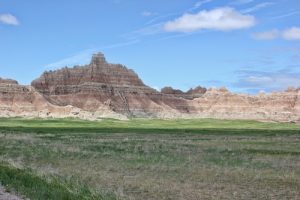
The Senate passed a resolution on Tuesday to overturn the Bureau of Land Management’s (BLM) Planning 2.0 rule with a goal of preserving state and local authority over land use, a move strongly supported by U.S. Sens. Cory Gardner (R-CO), John Hoeven (R-ND) and Lisa Murkowski (R-AK).
The Senate approved H.J. Res. 44, which was introduced under the Congressional Review Act, by a vote of 51 to 48. It would repeal the federal land-planning rule that was implemented by the Obama administration late last year. The measure next advances to President Donald Trump, where he will consider signing it into law.
BLM manages more than 246 million acres of land across mainly 12 Western states. Previously, BLM field officers coordinated with state, local and tribal governments on resource management activities. The Planning 2.0 rule, however, centralized the decision-making process in Washington, D.C.
“The final BLM Planning 2.0 Rule is an example of Washington’s failed one-size-fits-all approach to policymaking and highlights how little Washington bureaucrats understand the way of the West,” Gardner said.
“My goal has always been to bring more of Colorado to Washington and less Washington to Colorado, and I supported repealing this regulation because it begins to move this country away from a ‘Washington-knows-best’ mentality,” Gardner added.
Hoeven, meanwhile, previously called on Interior Secretary Ryan Zinke not to ignore the multiple use requirements established by Congress in managing federal lands in his new role. Hoeven has worked to ensure that federal lands remain open for a variety of uses, including grazing, energy production and recreation, while achieving conservation goals.
“Access to federal lands is vital to many state and local economies, especially in western states,” Hoeven said. “This BLM rule pulled decision-making away from local officials who know the land and understand the needs of their communities. By repealing this rule, we are preserving our longstanding tradition of allowing multiple uses on federal land and protecting the livelihoods of our ranchers, energy producers and many others.”
Murkowski, the sponsor of the Senate version of H.J. Res. 44, said she was pleased that the Senate had agreed to return power and decision-making authority to those who live near BLM lands.
“If left intact, this rule would have harmed grazing, timber, energy development, mineral production and even recreation on federal lands,” Murkowski said. “Once the president signs this resolution, western stakeholders will no longer be relegated to the sidelines, and once again be able to ensure that decisions are being made locally — not thousands of miles away at BLM headquarters.”
Murkowski added that the Planning 2.0 rule demotes state and local governments to the same status as any other member of the public, contrary to a law passed by Congress. Alaska’s energy, mineral and timber producers oppose the rule.
“This rule affects all 12 BLM states, and those states are not happy about it. It upends BLM’s multiple use mission by allowing the agency to pick and choose among preferred uses, while sidelining industries that provide good-paying jobs in western communities,” Murkowski said.



